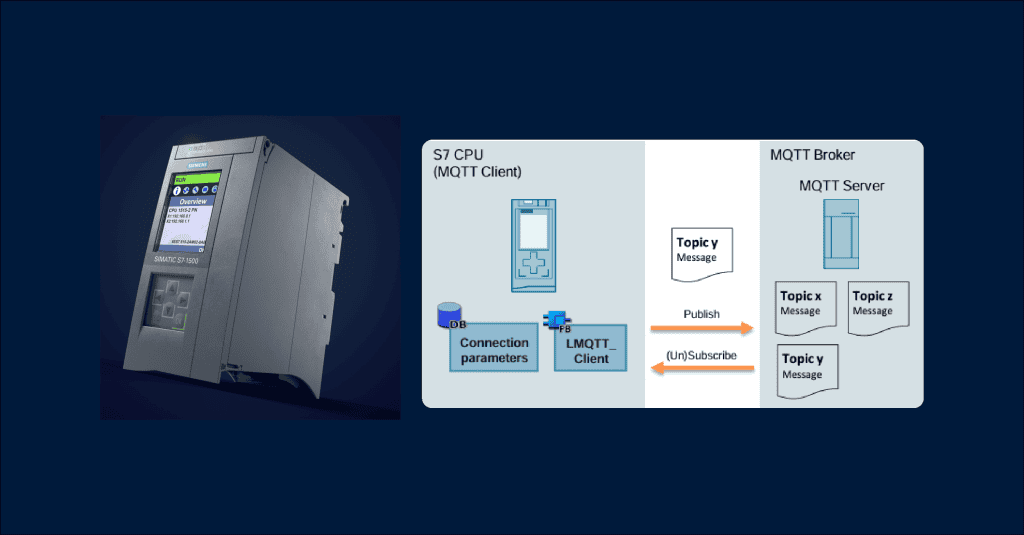Digitisation has a major impact on the economy and society and is progressing inexorably. One of its main drivers is the Internet of Things (IoT). The term “Internet of Things” is synonymous with one of the biggest current dynamics of change: the increasing networking and automation of devices, machines and products!
The protocol “Message Queue Telemetry Transport” (MQTT) is used in IoT as a communication protocol. Its lightweight approach opens up new possibilities for automation and is suitable for messaging between devices with minimum functionality. With the LMQTT library, the MQTT protocol is implemented in SIMATIC S7-1200/1500 Controllers.

Slim and quick: MQTT
The MQTT is a simple built-in binary publish and subscribe protocol at the TCP/IP level. It is suitable for messaging between low-functionality devices and transmission over unreliable, low-bandwidth, high-latency networks. With these characteristics, MQTT plays an important role for IoT and in M2M communication.
Criteria of MQTT
The following criteria distinguish the MQTT protocol:
- Lightweight protocol with low transport overhead
- Minimal need for network bandwidth through push mechanism
- Function for re-connection disconnection
- Re-sending messages after disconnection
- Mechanism for notifying interested parties after an unpredicted disconnection of a client
- Simple use and implementation thanks to a small set of commands
- Quality of Service (QoS level) with different reliability levels for the message delivery
- Optional encryption of messages with TLS
- Authentication of publishers and subscribers with username and password
Applicative implementation
To implement the MQTT protocol in a SIMATIC S7 Controller, the “LMQTT” library offers an adequate solution.
The “LMQTT” library provides a function block for the SIMATIC S7-1500 and SIMATIC S7-1200.
The function block “LMQTT_Client” integrates the MQTT Client function and allows you to submit MQTT messages to a broker (Publisher role) and to create subscriptions (Subscriber role). The communication can be secured via a TLS connection.
If you would like to discuss your specific requirements, speak to our team.
Find out more about SIMATIC Controllers




